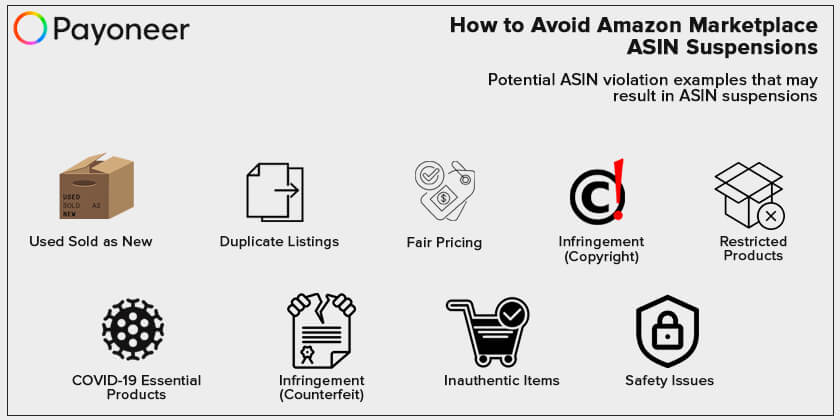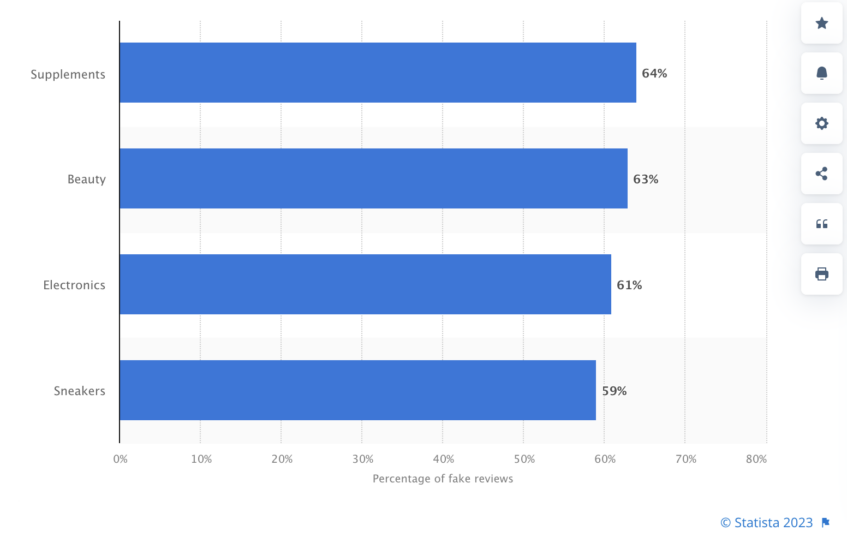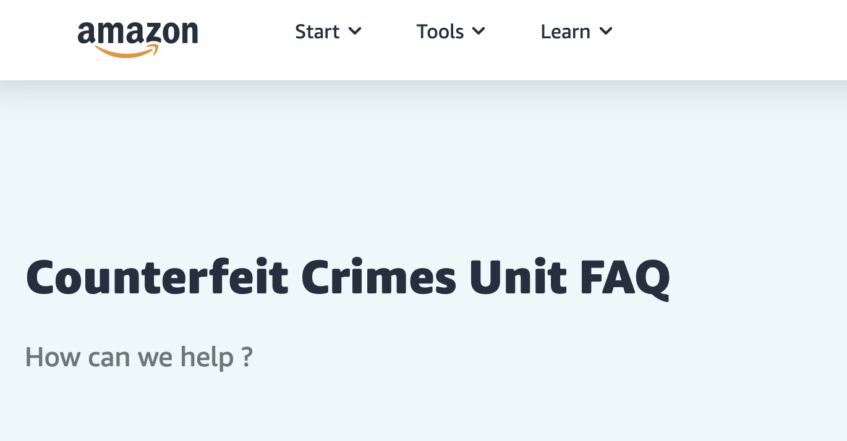
How to Avoid Suspension & How to Create a New ASIN in Amazon
As an Amazon seller, the holiday season is undoubtedly the busiest and most profitable time of the year.
With the increased number of customer orders, ensuring that your Amazon ASINs stay in good standing is essential to maximize your sales.
However, ASIN suspension can happen if you don’t comply with Amazon’s policies or fail to meet their performance metrics.
In this comprehensive guide, we’ll provide tips on avoiding Amazon Marketplace ASIN suspension during the holiday season and beyond.
By following these best practices, you can keep your ASINs in good standing and make the most of this busy time of the year.


- Understand Amazon’s Policies: The first step in avoiding ASIN suspension is to familiarize yourself with Amazon’s policies regarding product listings. Amazon has strict guidelines regarding the accuracy of product information, prohibited items, and prohibited actions. By staying up-to-date on Amazon’s policies, you can ensure that your listings comply with their rules.
- Keep Your Product Information Accurate: Amazon requires that your product information be accurate, complete, and up-to-date. This includes the title, description, images, and other details. Inaccurate or misleading information can lead to customer complaints, which may result in ASIN suspension.
- Monitor Your Account Health: Amazon provides a dashboard for your account health, including your ASINs. This dashboard will highlight any ASINs at risk of suspension, so you can act before it happens.
- Respond to Customer Feedback: Negative customer feedback can hurt your ASIN’s performance metrics, which may lead to suspension. Respond to customer feedback promptly and professionally, addressing any issues they may have had with your product or service.
- Keep Your Inventory in Stock: Running out of stock can hurt your ASIN’s performance metrics, which may result in suspension. Keep your inventory levels high enough to meet customer demand but not so high that you’re left with excess inventory after the holiday season.
- Use Amazon’s Tools to Your Advantage: Amazon provides various tools to help sellers monitor their ASINs, including the ASIN Health Report, the Listing Quality Dashboard, and the Product Compliance Dashboard. Use these tools to identify and address any issues with your listings.
By following these tips, you can help ensure that your ASINs stay in good standing on Amazon’s marketplace, allowing you to maximize your sales during the holiday season and beyond. Whether it’s the holiday season or any other time of the year, it’s crucial for Amazon sellers to ensure that their stores are always available and that their best-selling items are not at risk of suspension. After all, ASIN suspension can be a major setback, causing a significant loss of revenue and damage to your store’s reputation.
Let’s proceed with how to create a new ASIN in Amazon.


What is ASIN on Amazon?
ASIN stands for Amazon Standard Identification Number, which is a unique identifier assigned to every product listed on Amazon’s marketplace.
This 10-character alphanumeric code is used by Amazon to manage their inventory, track sales, and facilitate product searches.
If a seller’s ASIN is found to be in violation of Amazon’s policies, it can lead to ASIN suspension, which can be devastating for the seller’s store.
Naturally, we want to avoid being sanctioned, so we created this guide on how to create a new ASIN in Amazon.
In the past, Amazon would email sellers a warning notice regarding ASIN violations before suspending their accounts.
However, within the last year, Amazon has completely forgone issuing ASIN warning notices. Instead, Amazon now immediately suspends individual ASINs while leaving the seller account active.
ASIN suspensions require the seller to formally respond by submitting an appeal. Neglecting an ASIN suspension notice, receiving additional complaints, or having a denied appeal can lead to the entire account being suspended.
As an Amazon seller, it’s critical to fully understand the violations that can lead to ASIN suspensions and to take steps to avoid them. In the next section, we’ll look at some potential ASIN violation examples and provide tips on how to prevent ASIN suspensions, so you can keep your store active and continue to profit from your top-selling items.
It should be pointed out that ASINs are not just random numbers and letters; they are assigned based on the category and subcategory of the product.
This means that each product on Amazon has a unique ASIN that corresponds to its specific type and category.
In addition, ASINs can also be used to track inventory levels, which is especially important during peak seasons like the holidays.
If a seller runs out of stock for a product with a suspended ASIN, they will not be able to relist that item until the suspension is lifted, which can lead to lost sales and revenue.
Our in-house experts at Payoneer agree that understanding “What is ASIN on Amazon” and “How to avoid suspension and how to create it” are crucial for any Amazon seller looking to maintain a successful store.By following Amazon’s policies and best practices, e-commerce entrepreneurs and online sellers can avoid ASIN suspensions and continue to thrive on Amazon’s marketplace.
In the upcoming sections, we’ll delve deeper into the best practices for preventing ASIN suspension and how to handle it if it does occur.
Violation Notice: ‘Used Sold as New’
When it comes to e-commerce, customer satisfaction is everything. That’s why it’s important to ensure that every item you sell on Amazon is accurately described and in the condition advertised. Once you know how to create a new ASIN in Amazon, the process is the same for every single product in your catalog.
Unfortunately, “Used Sold as New” violations can occur when buyers receive an item that was advertised as new but arrived in a used condition.
This violation can lead to negative feedback, product returns, and even account suspension if left unchecked.
To avoid “Used Sold as New” violations, it’s important to understand Amazon’s definition of “new.” According to Amazon, a “new” item is defined as an “unused, unopened item in its original packaging, with all original packaging materials included, i.e. the original protective wrapping is intact.
Original manufacturer’s warranty still applies, with warranty details included in the listing comments.
Any deviation from this definition can lead to “Used Sold as New” violations and unhappy customers.
It’s also important to note that the method of shipment used by the seller can impact the likelihood of “Used Sold as New” violations.
For sellers using FBM (Fulfilled by Merchant), it’s crucial to inspect the item carefully before shipping and to accurately describe the condition in the product listing.
For sellers using FBA (Fulfilled by Amazon), Amazon takes responsibility for the shipping and handling of the product, but sellers must ensure that the item is accurately described and in the condition advertised.
These are direct violations on how to create a new ASIN in Amazon, and can lead to serious consequences for sellers.
By understanding Amazon’s definition of “new” and taking care to accurately describe the condition of the item, sellers can avoid this violation and maintain a high level of customer satisfaction.
Possible Violations by FBM Sellers on Amazon
As an FBM (Fulfilled by Merchant) seller on Amazon, it’s crucial to take full responsibility for the condition of the products you sell.
Failing to do so can result in potential violations that could negatively impact your seller account and reputation.
- One of the most common violations for FBM sellers is failing to inspect the product’s condition before the item leaves the facility.
This can lead to customers receiving items that are damaged, missing parts, or not in the condition advertised.
To avoid this violation, it’s important to thoroughly inspect each product before shipping it out to ensure that it meets Amazon’s definition of “new” and is accurately described in the listing.
- Selling outdated products is another potential violation that FBM sellers should be aware of.
Customers expect to receive products that are fresh and current, so selling items that have been sitting on the shelf for over a year can lead to negative feedback, returns, and even account suspension.
To avoid this violation, it’s important to regularly check the expiration dates of the products you sell and to remove any items that are no longer fresh or current.
- Inadequate packaging resulting in damage during transit is yet another potential violation for FBM sellers.
Amazon requires that products be packaged appropriately to prevent damage during transit, so failing to do so can lead to negative feedback, returns, and even account suspension.
To avoid this violation, it’s important to use sturdy, protective packaging that can withstand the shipping process and to clearly label fragile items.
Possible violations by FBA Sellers on Amazon
As an FBA (Fulfilled by Amazon) seller on Amazon, it’s important to be aware of potential violations that could negatively impact your seller account and reputation.
Here are two possible violations that FBA sellers should be aware of:
- Failing to update default return settings is one potential violation that FBA sellers should be aware of. When a customer returns an item to an FBA facility, the item is processed and added back to the seller’s inventory.
However, if the item is not properly inspected and deemed unsellable, it may no longer meet Amazon’s definition of “new.”
This can lead to negative feedback, returns, and even account suspension if left unchecked.
To avoid this violation, it’s important to regularly check and update default return settings to ensure that unsellable items are removed from inventory and not reshipped to customers.
- Sending items to FBA without Amazon barcode stickers is another potential violation that FBA sellers should be aware of. Amazon barcode stickers are unique identifiers that allow Amazon to track and process inventory in their facilities.
When sellers send items to FBA without Amazon barcode stickers, the items may get commingled with another seller’s inventory.
This can lead to negative feedback, returns, and even account suspension if left unchecked.
To avoid this violation, it’s important to always include Amazon barcode stickers when sending items to FBA.
In addition to these violations, FBA sellers should also be aware of Amazon’s requirements for packaging, labeling, and shipping products.
These are important steps in determining how to create a new ASIN in Amazon.
Amazon requires that all products be packaged appropriately to prevent damage during transit, labeled accurately with product information and barcodes, and shipped according to Amazon’s standards.
Failure to meet these requirements can lead to negative feedback, returns, and even account suspension.
FBA sellers on Amazon must be aware of potential violations and take steps to avoid them.
By updating default return settings, including Amazon barcode stickers, and following Amazon’s requirements for packaging, labeling, and shipping products,
FBA sellers can maintain a high level of customer satisfaction and avoid negative consequences.
By understanding “Possible Violations by FBA Sellers on Amazon,” e-commerce entrepreneurs and online sellers can avoid ASIN suspensions and continue to thrive on Amazon’s marketplace.
- Firstly, always inspect inventory before it ships out to customers or FBA to ensure that the condition is compliant with Amazon guidelines. This will help you avoid potential “Used Sold as New” violations and keep your customers happy.
- Secondly, maintain up-to-date inventory to avoid selling outdated products that could lead to negative feedback and returns.
- Thirdly, securely pack items before shipping to prevent damage during transit. This will help you avoid potential “Inadequate packaging” violations and ensure that your customers receive their products in good condition.
- Lastly, if using FBA, ensure that returned items are shipped back to the seller’s facility and that Amazon barcodes are added to each item. This will help you avoid potential mix-ups with other sellers’ inventory and ensure that your inventory is accurately tracked and processed.
2. Violation notice: duplicate listings
As an e-commerce seller on Amazon, it’s crucial to maintain one listing per unique product in the marketplace. Amazon requires this to ensure a fair and competitive marketplace for all sellers. Duplicate listings can occur due to several reasons and can lead to negative consequences for your seller account and reputation.
One reason for duplicate listings is failing to search the item by UPC. UPCs (Universal Product Codes) are manufacturer assigned to identify products, and are used by Amazon to ensure that each product has only one listing. Failing to search by UPC can lead to unintentional duplicate listings.
Another reason for duplicate listings is creating updated listings of existing products within Amazon’s catalog to circumvent negative reviews. This is a violation of Amazon’s policies and can lead to account suspension and other negative consequences.
To avoid duplicate listing violations, it’s important to always search by UPC before creating a new listing and to avoid creating new listings for existing products within Amazon’s catalog. In addition, regularly monitoring your product listings and removing any duplicates can help prevent unintentional violations.
We also recommend the following two additional tips to help avoid duplicate listing violations:
- Never list items for sale by title; always list by UPC
- If you spot duplicate listings by other online sellers on Amazon, notify customer support to remove all non-compliant pages.
- Use Amazon’s product listing tools to identify and merge duplicate listings. This can help you quickly and efficiently clean up your inventory and avoid potential violations.
- Ensure that your team members and employees are aware of Amazon’s policies regarding duplicate listings and that they are properly trained to avoid unintentional violations.
By following these tips and staying aware of Amazon’s policies, e-commerce entrepreneurs and online sellers can avoid duplicate listing violations and maintain a successful business on Amazon’s marketplace.
3. Amazon fair pricing policy
As an Amazon seller, it’s important to understand Amazon’s Fair Pricing Policy. This policy aims to ensure fair and competitive pricing practices that maintain customer trust and satisfaction. To enforce this policy, Amazon utilizes software bots to monitor pricing practices based on the following framework:
- Setting a reference price that beguiles customers.
- Setting a price that is drastically higher than recent prices on or off Amazon.
- Setting excessive shipping fees that go beyond current public carrier rates and reasonable handling charges may violate customer perception.
- Selling many units of a product for a higher unit price than a single unit of the same product.
In addition, violations of the Fair Pricing Policy can result in pricing suspensions. To avoid potential violations, Amazon sellers should:
- Regularly monitor their prices to ensure they align with Amazon’s pricing guidelines.
- Remove problematic inactive inventory to avoid pricing discrepancies.
- Check their software settings to ensure compliance with Amazon’s Fair Pricing Policy.
- Vet virtual assistants and third-party companies before granting them account access to prevent potential violations.
By understanding and following the Amazon Marketplace Fair Pricing Policy, e-commerce entrepreneurs and online sellers can maintain fair and competitive pricing practices that enhance customer trust and satisfaction.
When entering prices manually, it’s important to review them daily to ensure compliance with Amazon’s pricing guidelines.
If software is used to enter prices, check software settings daily to ensure compliance.
4. How to maintain seller safety standards on Amazon


Source: Pixabay
Ensuring that every single item sold on Amazon is safe for customers is a top priority. To achieve this goal, Amazon has a dedicated Product Safety Team that regularly audits (checks) inventory to validate compliance with all the Amazon Safety Guidelines.
It is quite possible that ASINs may be reclassified as ‘unsafe’ if they do not meet these guidelines. Common reasons for reclassification include items that are a fire hazard, have been recalled, or have been classified by a regulatory agency such as the FDA, USDA or CPSC the as unsafe.
To avoid potential safety violations, here are some tips:
- Review the Amazon Safety Guidelines regularly to ensure compliance.
- If you’re unsure about a product’s compliance, remove it from your inventory until its compliance can be confirmed.
By taking these steps and staying up-to-date with Amazon’s policies, e-commerce entrepreneurs and online sellers can maintain a safe and compliant inventory on Amazon’s marketplace.
5. Amazon rules regarding restricted products
As Amazon’s marketplace evolves, ingredients or items that were once allowed may be deemed prohibited. Sellers who are unaware of Amazon’s up-to-date list of “Restricted Products” are at risk of having their accounts suspended. Here are a few reasons products may become restricted:
- If a regulatory agency (FDA) issues a negative statement about a specific ingredient, then Amazon may ban all items containing that ingredient.
- If Amazon decides that an item could be considered a weapon, such as certain types of fidget spinners, all variants of that specific item may be banned.
To avoid running afoul of Amazon’s restrictions, here are some pro tips:
- Review Amazon’s Restricted Product Guidelines daily to ensure compliance.
- Keep in mind that Amazon’s list may not always be up-to-date with the latest regulatory decisions. Even if a product or ingredient has not been specifically banned by Amazon, negative statements from regulatory agencies may still result in ASIN or account suspensions.
- Research all ingredients by their known monikers, as some ingredients may have multiple names.
By staying informed and regularly reviewing Amazon’s guidelines, e-commerce entrepreneurs and online sellers can avoid running into issues with restricted products and keep their stores running smoothly.
6. Selling inauthentic items on Amazon


Source: Statista Amazon Product Categories with Largest Share of Fake Product Reviews December 2018
In Amazon’s terms, an inauthentic item is an item that doesn’t meet Amazon’s standards for legitimacy.
Therefore, if the item doesn’t satisfy Amazon’s criteria for authenticity, it’s automatically considered as such.
For example, if the e-commerce seller purchases a product from a sub-standard distributor, that could qualify as inauthentic by Amazon.
Amazon closely examines the authenticity of items based on how they are sourced and if they meet brand approval requirements.
This means that if sellers obtain their merchandise from physical retail locations, online marketplaces, or unverified suppliers, they run the risk of selling counterfeit or inauthentic products.
Moreover, if sellers list brands that require explicit approval from Amazon, they may face accusations of selling counterfeit items.
Pro Tips
- Refrain from purchasing inventory from physical stores or online platforms.
- Thoroughly scrutinize product suppliers, e.g., check if they have a legitimate website, phone number, and verifiable mailing address, among others.
- Inspect products meticulously before adding them to inventory. If brand validation is necessary, submit the required documentation to Amazon.
7. Amazon’s Zero-Tolerance Policy towards infringement (counterfeit) products


Amazon has a strict policy against counterfeit products, which refers to an item that is not authentic or is an imitation of a brand’s product.
Brand owners often create their own unique product detail pages within the Amazon catalog, but other Amazon sellers can include their products in the listing if the item isn’t registered in Amazon’s Brand Registry.
This can lead to counterfeit complaints if a brand owner suspects a seller of listing a fake item on their detail page, which can include listing an incorrect or defunct version of the product or a generic, unbranded variant.
Payoneer’s tips for avoiding infringement & counterfeit claims
To prevent infringement and counterfeit complaints, sellers should list items using Universal Product Codes (UPCs) and create a new listing in the Amazon catalog for generic items.
By following these pro tips, sellers can avoid violating Amazon’s no-tolerance policy towards infringement and maintain their seller accounts in good standing.
8. Amazon Policy on Infringement (Copyright)


Amazon’s policy on infringement (copyright) is crucial for all sellers to understand. If a seller creates a ‘Detail Page’ and references another brand’s title, image, or description without authorization from the owner, the listing is in contravention of Amazon’s policies regarding the brand owner’s intellectual property.
Violating a brand owner’s intellectual property rights can have serious consequences, such as receiving an infringement complaint. Even minor changes to an Amazon catalog page can lead to an infringement complaint if the brand is not referenced correctly.
Upon receiving a complaint, Amazon often mandates that the seller initiates communication with the brand owner to obtain a retraction of the infringement. However, this process can be arduous and frustrating, as some complainants are notoriously unresponsive.
Tips for Avoiding Infringement Violations on Amazon
- Before adding an item, check uspto.gov to ensure that the listing doesn’t violate any active trademarks.
- If the item is generic and mentions a brand name, confirm that the listing abides by Amazon’s allowable terms for referencing products. It’s always best to obtain consent from the brand owner before referencing their brand in any way.
9. Amazon’s policy on essential products during global crises
During the novel coronavirus pandemic (COVID-19), millions of people lost their lives, and hundreds of millions suffered. Unprecedented disruption to daily life took place.
Amazon has classified certain products such as toilet paper, face masks, diapers, anti-bacterial wipes, anti-bacterial gels, and more as “essential” due to sellers inflating prices during uncertain times.
Now, sellers must be approved to sell these types of essential products. Many e-commerce sellers got served with ASIN suspensions from Amazon for products that could previously be displayed in a seller’s inventory without prior Amazon approval.
It is crucial to conduct daily reviews of inventory. These must guarantee compliance with the ‘COVID Essential’ category vis-à-vis Amazon Guidelines.
That’s a Wrap: Final Thoughts
As the holiday season approaches, it’s important for online sellers to stay vigilant and ensure compliance with Amazon’s policies and guidelines. We have introduced e-commerce sellers to a complete guide on how to create a new ASIN in Amazon.
By following the pro tips provided in this guide, you can help prevent ASIN suspensions and keep your store running smoothly. In addition to the tips outlined in this guide, utilizing a reliable payment platform can also be a game-changer for your e-commerce business.
Payoneer offers a secure and easy-to-use payment solution for online sellers, making it easy to manage your funds and expand your business globally.
With Payoneer, you can receive payments in multiple currencies and withdraw funds directly to your bank account or Payoneer Mastercard.
Plus, with 24/7 customer support and fraud protection, you can have peace of mind knowing your finances are in good hands.
As you prepare for the holiday rush, don’t forget to review your inventory and consider partnering with a trusted payment platform like Payoneer to streamline your e-commerce payment operations.




